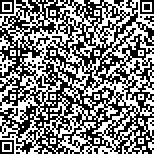| 引用本文: |
卢英,廖炼炼,梁辉.针药并用联合康复训练对脑卒中后运动性失语患者语言功能、神经功能及血液流变学的影响[J].湖南中医药大学学报,2019,39(9):1138-1142[点击复制] |
|
| |
|
|
| 本文已被:浏览 2850次 下载 868次 |
| 针药并用联合康复训练对脑卒中后运动性失语患者语言功能、神经功能及血液流变学的影响 |
| 卢英,廖炼炼,梁辉 |
| (广西国际壮医医院针灸推拿科, 广西 南宁 530021;广西壮族自治区人民医院康复科, 广西 南宁 530021) |
| 摘要: |
| 目的 观察针刺联合中药、语言康复训练对脑卒中后运动性失语患者语言功能、神经功能及血液流变学的影响。方法 将2017年10月至2019年2月本院针灸科收治的104例脑卒中后运动性失语患者随机分为观察组和对照组,每组52例。对照组进行语言康复训练,观察组在对照组的基础上行针刺联合中药治疗。观察两组患者的临床疗效,比较治疗前后两组患者语言功能评分、神经功能缺损(NIS)评分、血液流变学指标变化。结果 (1)治疗后观察组患者的总有效率为88.46%,高于对照组的69.23%,差异有统计学意义(P<0.05);(2)治疗后,两组患者的书写能力、复述能力、阅读能力、听理解能力均较治疗前升高,差异均有统计学意义(P<0.05),且观察组高于对照组(P<0.05);(3)治疗后,两组患者的NIS分数较治疗前下降(P<0.05),且观察组低于对照组(P<0.05);(4)治疗后,两组患者的全血黏度高切、全血黏度低切、血液黏度、红细胞压积较治疗前下降(P<0.05),且观察组低于对照组(P<0.05)。结论 针刺联合中药、语言康复训练治疗脑卒中后运动性失语患者,可改善患者语言功能、降低神经功能缺损和血液粘稠度,临床效果显著高于单用语言康复训练治疗。 |
| 关键词: 脑卒中 运动性失语 语言康复训练 针刺 神经功能缺损 血液流变学 |
| DOI:10.3969/j.issn.1674-070X.2019.09.019 |
| 投稿时间:2019-05-09 |
| 基金项目:广西壮族自治区卫生和计划生育委员会科研课题(Z20180762)。 |
|
| Effects of Acupuncture and Chinese Materia Medica Combined with Rehabilitation Training on Language Function, Nerve Function and Hemorheology in Patients with Motor Aphasia after Stroke |
| LU Ying,LIAO Lianlian,LIANG Hui |
| (Department of Acupuncture and Massage, Guangxi International Hospital of Zhuang Medicine, Nanning, Guangxi 530021, China;Department of Rehabilitation, The People's Hospital of Guangxi Zhuang Autonomous Region, Nanning, Guangxi 530021, China) |
| Abstract: |
| Objective To observe the effects of acupuncture combined with Chinese materia medica and language rehabilitation training on language function, nerve function and hemorheology in patients with motor aphasia after stroke. Methods A total of 104 patients with motor aphasia after stroke admitted in the acupuncture department of our hospital from October 2017 to February 2019 were randomly divided into an observation group and a control group, with 52 cases in each group. The control group received language rehabilitation training, while the observation group received acupuncture combined with Chinese materia medica on the treatment basis of the control group. Clinical efficacy in the 2 groups was observed. Changes of language function score, neurological impairment score (NIS) and hemorheological indexes in the 2 groups were compared before and after the treatment. Results (1) After the treatment, the total effective rate of patients in the observation group was 88.46%, higher than 69.23% in the control group, with statistically significant difference (P<0.05); (2) After the treatment, the writing ability, repetition ability, reading ability and listening comprehension ability of patients in the 2 groups were higher than those before the treatment, with statistically significant difference (P<0.05), and those in the observation group was higher than those in the control group (P<0.05); (3) After the treatment, the NIS scores in the 2 groups were lower than those before the treatment (P<0.05), and that in the observation group was lower than that in the control group (P<0.05); (4) After the treatment, the high shear whole blood viscosity, low shear whole blood viscosity, blood viscosity and hematocrit in the 2 groups were lower than those before the treatment (P<0.05), and those in the observation group were lower than those in the control group (P<0.05). Conclusion Acupuncture combined with Chinese materia medica and language rehabilitation training can improve language function, decrease neurological impairment and blood viscosity in patients with motor aphasia after stroke, and the clinical efficacy is significantly better than that of language rehabilitation training alone. |
| Key words: stroke motor aphasia language rehabilitation training acupuncture neurological impairment hemorheology |
|

二维码(扫一下试试看!) |
|
|
|
|




